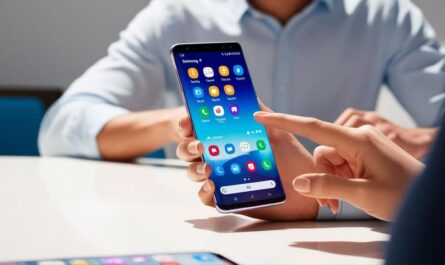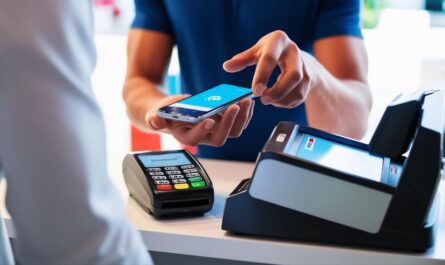One of the best effective applications of ai in food delivery apps is personalized recommendations. Food apps have become an important part of our daily lives, and artificial intelligence (AI) plays a big role on improving customers experience.
By analyzing things like your food delivery apps’ order history, browsing patterns, dietary preferences, etc, artificial intelligence algorithms can suggest dishes that align with your app users tastes. This not only increases customer satisfaction but also encourages repeat orders and loyalty on most delivery apps.
For instance, Uber Eats uses ai to offer personalized meal recommendations based on previous orders, favorite cuisines, and even weather conditions. This approach helps users to discover new dishes they might enjoy, making the ordering process more engaging and personalized.
Similarly, Grubhub employs natural language processing (NLP) to understand its customers preferences and provide tailored recommendations for restaurants and dishes. This technology ensures that users receive relevant suggestions, improving overall experience with the delivery app.
How do food delivery apps use ai to simplify order processing
AI is not just limited to recommendations; it also plays an important role in streamlining the ordering process. For instance, ai-powered chatbots are increasingly used in food delivery apps to assist with things like order modifications, complaints, real-time support, etc.
These chatbots use NLP (natural language processing) to understand customer requests, thereby reducing wait times for human agents and providing faster response times.
Businesses like Domino’s Pizza for example, uses ai-based chatbots and automation voice assistants to help its customers place orders quickly and easily. This automation not only speeds up the ordering process but also ensures that orders are accurate, reducing errors and improving customer’s satisfaction.
Moreover, ai-driven smart search and filters also lets users to quickly locate dishes based on dietary preferences or tehir cuisine type. What this feature does is learn the delivery app preferences over time, and refine search results to offer the most relevant options for users.
They operate 24/7, resolving queries quickly and minimizing wait times. Chatbots also ensure accurate order tracking, address complaints efficiently, thereby creating a strong user experience.
How does ai improve delivery app routes and operational efficiency
Most delivery apps confirmed the use of ai is revolutionizing the apps’ logistics of food delivery by optimizing delivery routes, improving operational efficiency, etc. Analyzing these traffic patterns, restaurant preparation times, real-time rider availability, its easy for ai systems to ensure that the most efficient delivery routes are assigned to the couriers.
This approach minimizes delivery times, improves user satisfaction, and reduces operational costs of your delivery app. DoorDash, for instance, uses predictive analytics to anticipate peak delivery times and allocate resources accordingly. This ensures timely deliveries for their customers and helps them manage peak demand periods efficiently.
AI also helps DoorDash drivers choose the fastest routes too, thereby reducing delivery times for them, and also increasing its customer satisfaction.
Furthermore, ai-powered autonomous delivery solutions are now being explored by companies like Serve Robotics. These solutions involve ai-powered delivery robots navigating sidewalks and streets, reducing delivery costs and providing better contactless delivery options.
So if you can afford that approach, you can as well think about towards that direction for your delivery app integration.
You can read more on what is future of food delivery apps trends and innovations in ai-powered autonomous delivery solutions. This topic investigates the latest advancements in autonomous delivery vehicles, drones, and smart kitchen automation, discussing their potential to revolutionize the delivery process.
What are the benefits of ai in food delivery apps
Personalized experience. Integration of ai in delivery apps offers numerous benefits, both for customers and businesses. For instance, ai-driven recommendations and chatbots provides a tailored experience for delivery apps, increasing customer engagement and loyalty.
Operational efficiency is also important, ai system optimizes delivery routes and streamlines logistics, thereby reducing delivery times and operational costs too. Functionalities like dynamic pricing are also being used by ai system to adjust pricing strategies based on real-time demand, weather, and competitor actions. These also helps in maximizing revenue for your delivery app clients.
You can also benefit from ai-based systems which detects suspicious transactions and prevents fraud. This helps in improving platform security.
What are examples of ai in food delivery apps
Several food delivery apps are at the forefront of ai adoption. For example, Uber Eats uses ai for its route optimization, personalized recommendations, and demand forecasting. DoorDash on the other hand leverages ai for predictive analytics, voice ordering, and safe in-app conversations.
Grubhub also incorporates ai for personalized recommendations and its Amazon’s Just Walk Out Technology. Platforms like Instacart also employs ai for its grocery item identification and smart cart technology.
These examples illustrate how ai is transforming the food delivery industry by improving customer experiences, optimizing operations, and driving innovation.
For more information on ai in food delivery app, you can visit Kody Technolab for insights into ai-driven customer experiences and operational efficiencies. You can search on Google to check them out!



